AWS Secrets Management
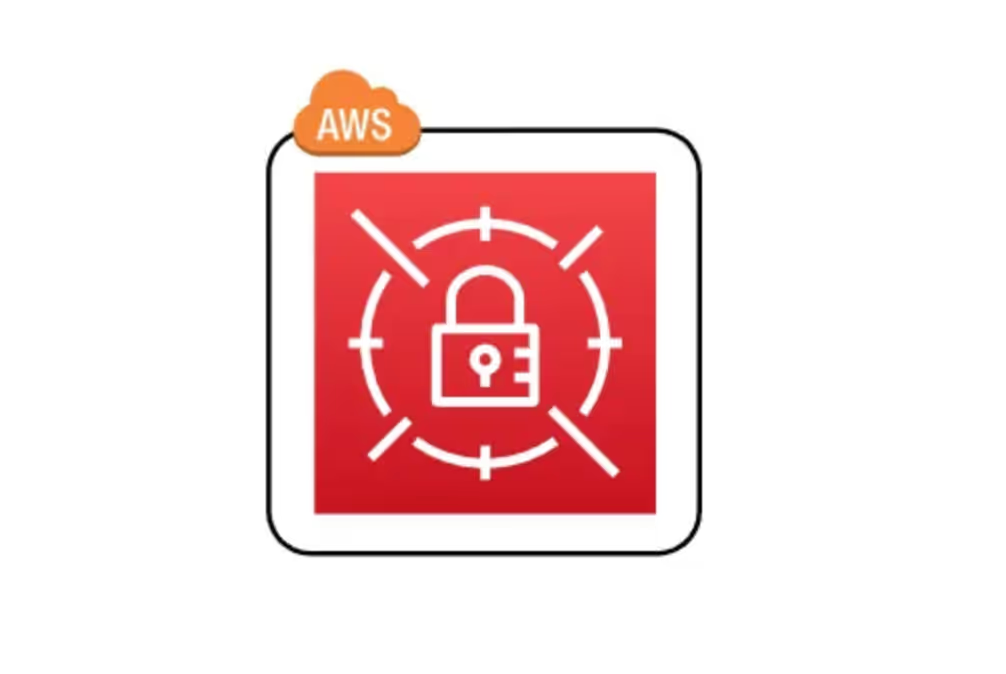
Managing secrets securely in AWS doesn’t have to be expensive or require a compromise on security.
Let’s walks through implementing an AWS secrets management solution that combines cost optimization, automated rotation, and monitoring.
The Problem of Secrets Sprawl in Applications
Organizations face these common secrets management problems such as
- Hardcoded secrets in configuration files and environment variables
- Manual rotation processes that are error-prone and inconsistent
- Excessive costs from over-relying on AWS Secrets Manager
- Lack of monitoring and alerting for unauthorized access
- Complex integration across different compute services
Our solution addresses these challenges with an approach which features a hybrid architecture that routes secrets based on their characteristics:
Architecture Overview & Benefits
- AWS Secrets Manager: For rotating credentials requiring automated rotation ($0.40/month each)
- AWS Parameter Store: For static secrets and configuration values (free for standard parameters)
- Customer-managed KMS keys with automatic rotation enabled
- Zero-trust IAM policies with IP restrictions and permission boundaries
- audit logging via CloudTrail with S3 storage
- Real-time monitoring with custom CloudWatch metrics and alerting
Performance & Cost Optimization
- In-memory caching to reduce API calls and costs
- Lifecycle management for logs and audit data
- Resource tagging for cost tracking and governance
Automated Operations
- Infrastructure as Code with Terraform modules
- EventBridge-driven alerting for security events
Prerequisites and Environment Setup
Required Tools and Permissions
Before beginning the implementation, ensure you have the following tools installed:
# Verify tool installations
terraform --version
aws --version
jq --version AWS Permissions
Your AWS credentials need permissions for:
- KMS key management
- Secrets Manager and Parameter Store operations
- IAM role and policy creation
- CloudWatch metrics and alarms
- Lambda function deployment
- EventBridge rule configuration
- SNS topic creation and subscription management
Environment Preparation
# Clone the project repository
git clone https://github.com/ToluGIT/aws-secrets-manager
cd aws-secrets-management
# Verify the project structure
tree -L 3Expected directory layout:
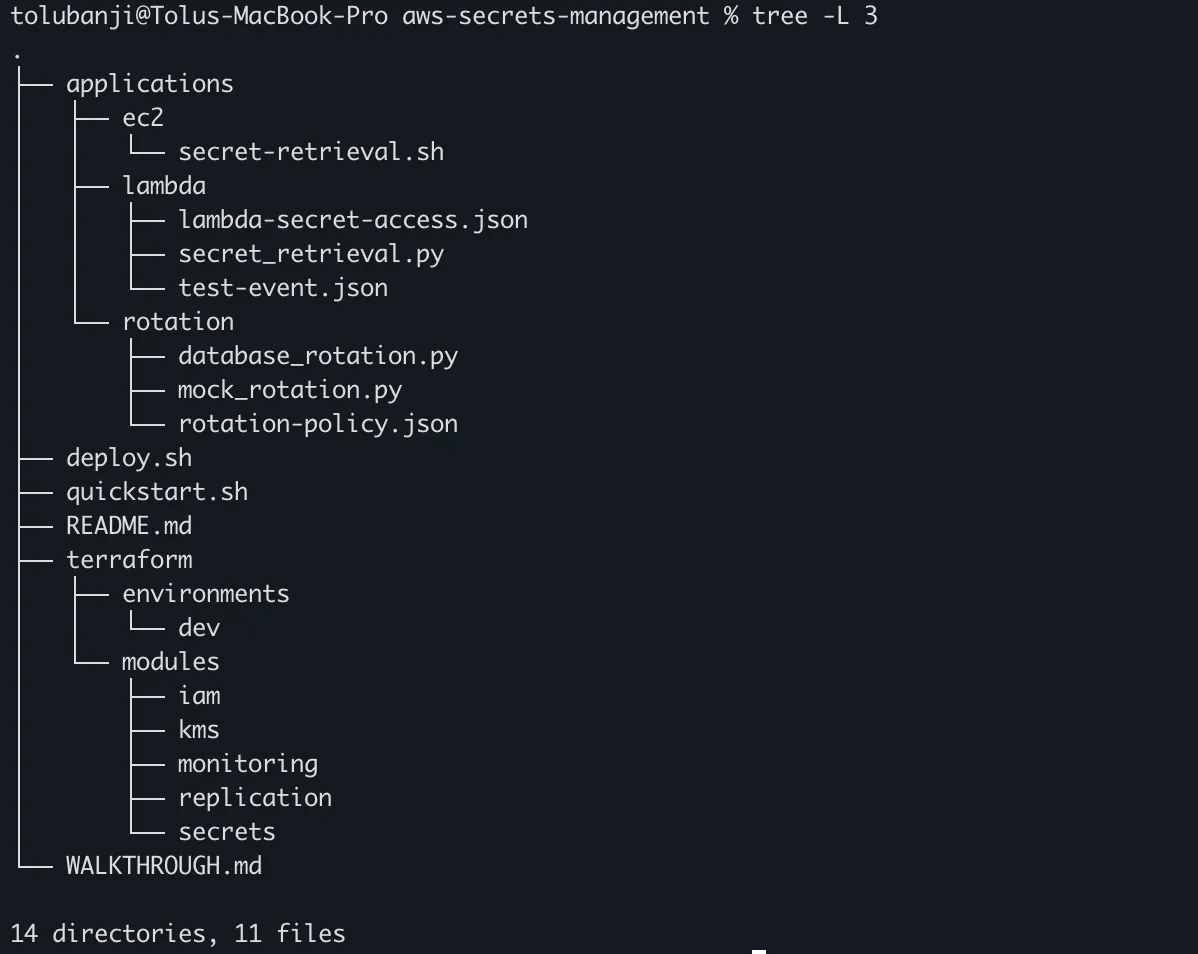
Phase 1: Infrastructure Foundation with Terraform
Step 1: Environment Configuration
Navigate to your target environment directory:
cd terraform/environments/devCustomize the configuration file:
# terraform/environments/dev/terraform.tfvars
project = "enterprise-secrets"
environment = "dev"
allowed_ips = ["203.0.113.0/24", "198.51.100.0/24"] # Your IP ranges
recovery_window_days = 30
log_retention_days = 90Note: When using Terraform variables, you have three options for setting values:
- Default values in the variable declaration (default = “value”)
- Values in terraform.tfvars file (what we’ve set up)
- Environment variables with TF_VAR_ prefix (export TF_VAR_alert_email=toluidni@gmail.com)
The precedence is: environment variables > tfvars file > default values
Step 2: Review Secret Configuration
The main.tf file defines your secrets inventory:
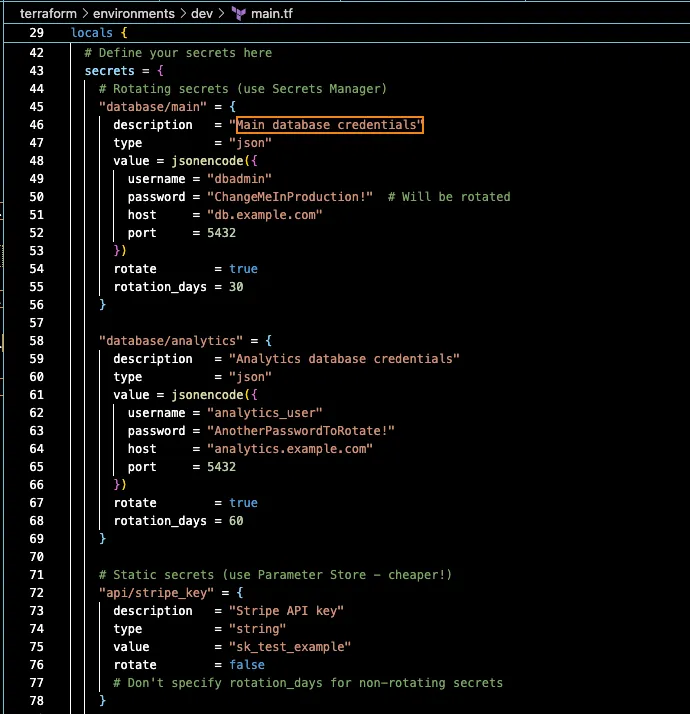
Security Best Practice: Initial passwords will be rotated upon first deployment.
Step 3: Deploy Infrastructure
Use the automated deployment script:
# Make the deployment script executable
chmod +x ../../../deploy.sh
# Run the automated deployment
../../../deploy.shThe script will guide you through the deployment process: 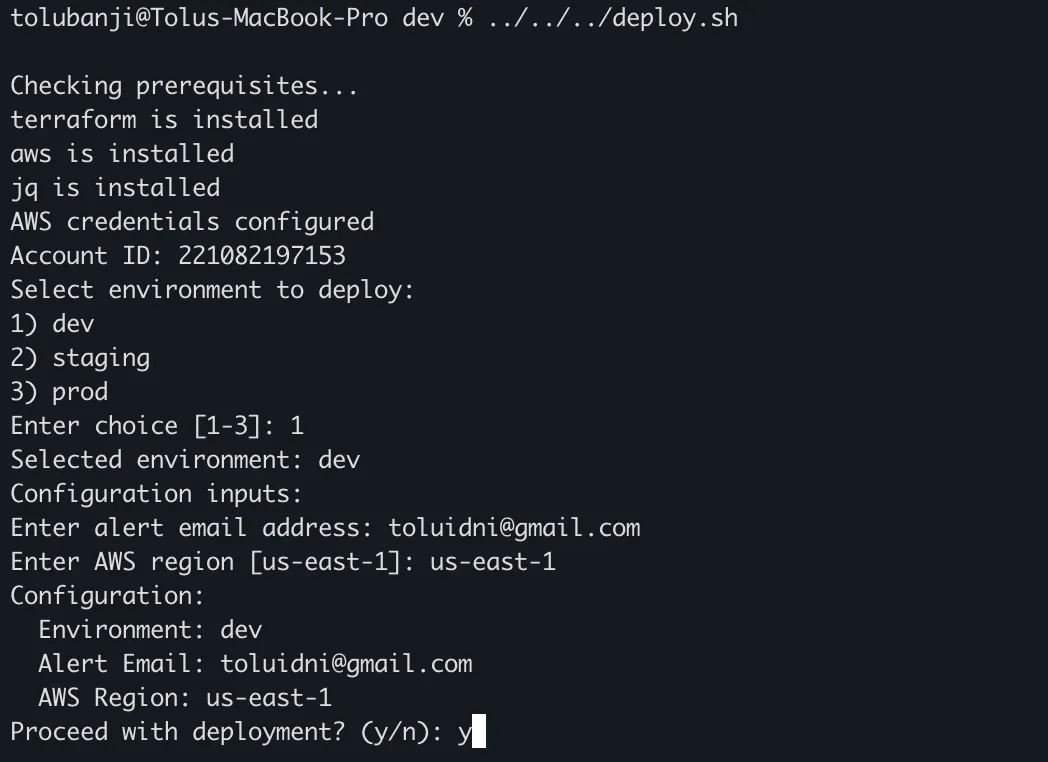

Step 4: Verify Infrastructure
Test the deployed infra:
# Test Secrets Manager access
aws secretsmanager get-secret-value \
--secret-id /enterprise-secrets/dev/database/main \
--region us-east-1 \
--query 'SecretString' \
--output text | jq .
# Test Parameter Store access
aws ssm get-parameter \
--name /enterprise-secrets/dev/api/stripe_key \
--with-decryption \
--region us-east-1 \
--query 'Parameter.Value' \
--output text
# Verify KMS key rotation status
aws kms get-key-rotation-status \
--key-id $(terraform output -raw kms_key_id) \
--region us-east-1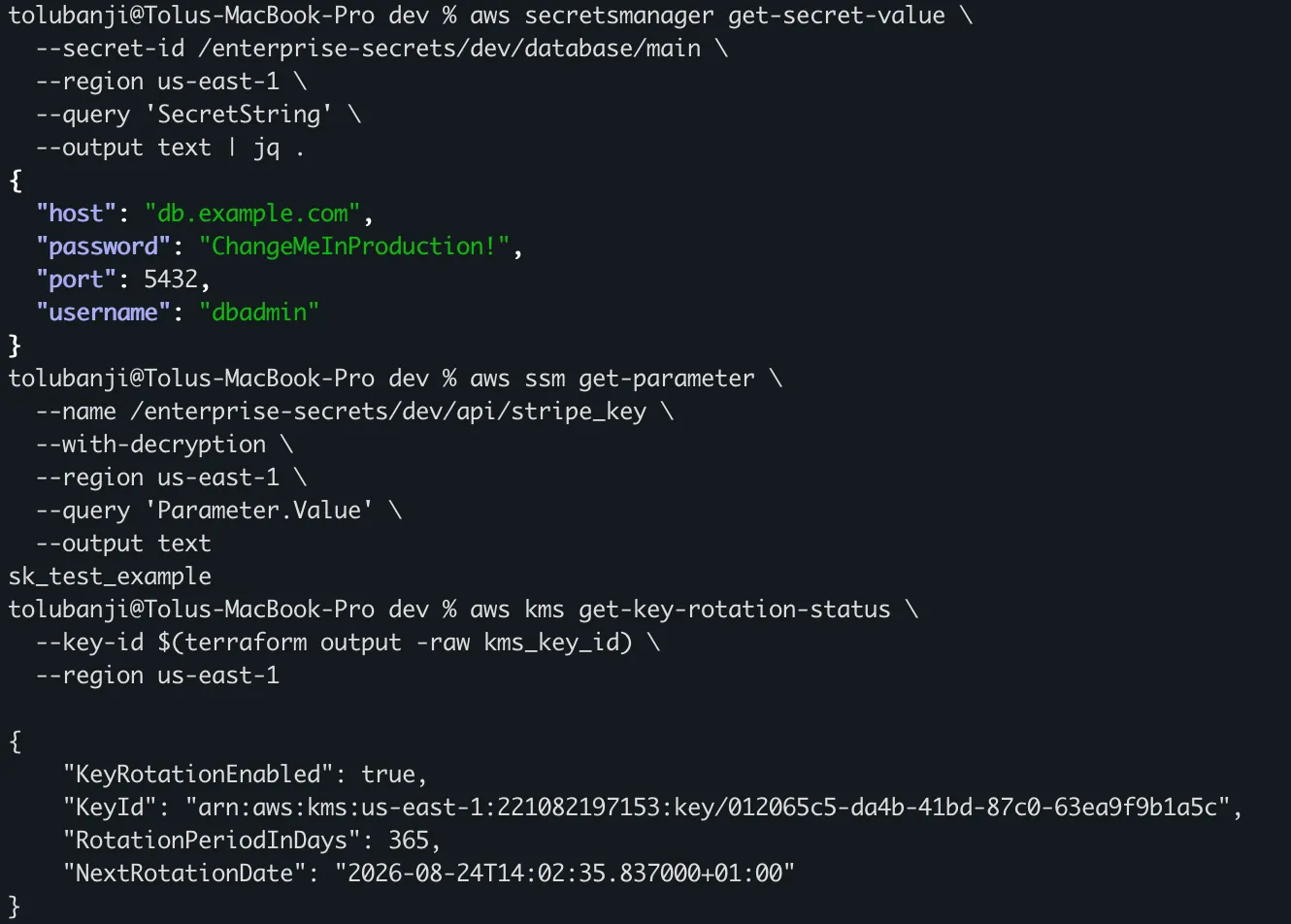
Phase 2: Secret Management Organization
Secret Naming Convention
All secrets follow a consistent hierarchy:
/{PROJECT}/{ENVIRONMENT}/{CATEGORY}/{NAME}
Examples:
/enterprise-secrets/prod/database/main
/enterprise-secrets/prod/api/stripe_key
/enterprise-secrets/dev/config/feature_flagsAdding New Secrets
To add secrets to your environment, update the locals.secrets block in main.tf:
# Add a new rotating secret
"database/analytics" = {
description = "Analytics database credentials"
type = "json"
value = jsonencode({
username = "analytics_user"
password = "TempPassword456!"
host = "analytics.prod.yourcompany.com"
port = 5432
})
rotate = true
rotation_days = 60 # Rotate every 60 days
}
# Add a new static secret
"integrations/slack_webhook" = {
description = "Slack webhook URL for notifications"
type = "string"
value = "https://hooks.slack.com/services/YOUR/WEBHOOK/URL"
rotate = false
}Apply the changes:
terraform plan -var="alert_email=toluidni@gmail.com"
terraform applyPhase 3: Application Integration Patterns
Lambda Function Integration
Deploy the secret retrieval Lambda function:
cd applications/lambda
# Create deployment package
zip function.zip secret_retrieval.py
# Deploy the Lambda function
aws lambda create-function \
--function-name enterprise-secrets-dev-retrieval \
--runtime python3.11 \
--role arn:aws:iam::xxxxxxxx:role/enterprise-secrets-dev-lambda-secrets-reader \
--handler secret_retrieval.lambda_handler \
--zip-file fileb://function.zip \
--timeout 30 \
--memory-size 256 \
--environment "Variables={ENVIRONMENT=dev,PROJECT=enterprise-secrets,CACHE_TTL=300}" \
--region us-east-1Note: The lambda_role_arn is one generated from your terraform apply, you can retrieve it using the following command
cd ../../terraform/environments/dev && terraform output -raw lambda_role_arnUsing the Lambda Function
The Lambda function provides caching and error handling:
# Example usage in your application Lambda
from secret_retrieval import get_secret_from_manager, get_parameter
def your_application_handler(event, context):
# Get database credentials (from Secrets Manager)
db_creds = get_secret_from_manager('database/main')
# Create connection string
connection_string = (
f"postgresql://{db_creds['username']}:{db_creds['password']}"
f"@{db_creds['host']}:{db_creds['port']}/mydb"
)
# Get API key (from Parameter Store)
stripe_key = get_parameter('api/stripe_key')
# Get feature flags
features = get_parameter('config/feature_flags')
# Your application logic here
return process_request(connection_string, stripe_key, features)Testing the Lambda Function
# Create test event
cat > test-event.json << EOF
{
"test": true,
"requested_secrets": ["database/main", "api/stripe_key"]
}
EOF
# Invoke the function
aws lambda invoke \
--function-name enterprise-secrets-dev-retrieval \
--payload file://test-event.json \
--cli-binary-format raw-in-base64-out \
--region us-east-1 \
response.json
# View the response
cat response.json | jq .

EC2 Instance Integration
Deploy the secret retrieval script to your EC2 instances:
# Ensure your EC2 instance uses the IAM instance role created.
# Copy script to EC2 instance (replace with your instance details)
scp -i 'your private key (.pem file) applications/ec2/secret-retrieval.sh ec2-user@your-instance-ip:/home/ec2-user/
# SSH to the instance and set up the script
ssh ec2-user@your-instance-ipOn the EC2 instance, complete the setup:
# Move script to system location
sudo cp secret-retrieval.sh /opt/scripts/
sudo chmod +x /opt/scripts/secret-retrieval.sh
# Create required directories
sudo mkdir -p /var/cache/secrets
sudo chmod 600 /var/cache/secrets
sudo chown ec2-user:ec2-user /var/cache/secrets
# Set up environment variables
echo 'export PROJECT="enterprise-secrets"' >> ~/.bashrc
echo 'export ENVIRONMENT="dev"' >> ~/.bashrc
echo 'export AWS_REGION="us-east-1"' >> ~/.bashrc
source ~/.bashrc
# Install jq for JSON processing
sudo yum install -y jqEC2 Usage Patterns
The script provides multiple usage patterns for different integration needs:
# Export secrets as environment variables
sudo bash -c 'source /opt/scripts/secret-retrieval.sh export && echo "Database Host: $DB_HOST" "Database Username: $DB_USERNAME" '
# Retrieve individual secrets
DB_PASSWORD=$(/opt/scripts/secret-retrieval.sh get-secret database/main | jq -r '.password')
STRIPE_KEY=$(/opt/scripts/secret-retrieval.sh get-parameter api/stripe_key)
DB_PASSWORD=$(sudo /opt/scripts/secret-retrieval.sh debug-json database/main | grep "password:" | cut -d ' ' -f2)
echo "Password: ${DB_PASSWORD:0:3}***"
# Application startup script for a web application:
#!/bin/bash
# /opt/yourapp/start.sh
# Load all secrets into environment
source /opt/scripts/secret-retrieval.sh export
# Build application configuration
export DATABASE_URL="postgresql://${DB_USERNAME}:${DB_PASSWORD}@${DB_HOST}:${DB_PORT}/yourapp"
export STRIPE_SECRET_KEY="${STRIPE_API_KEY}"
# Start your application
python /opt/yourapp/app.py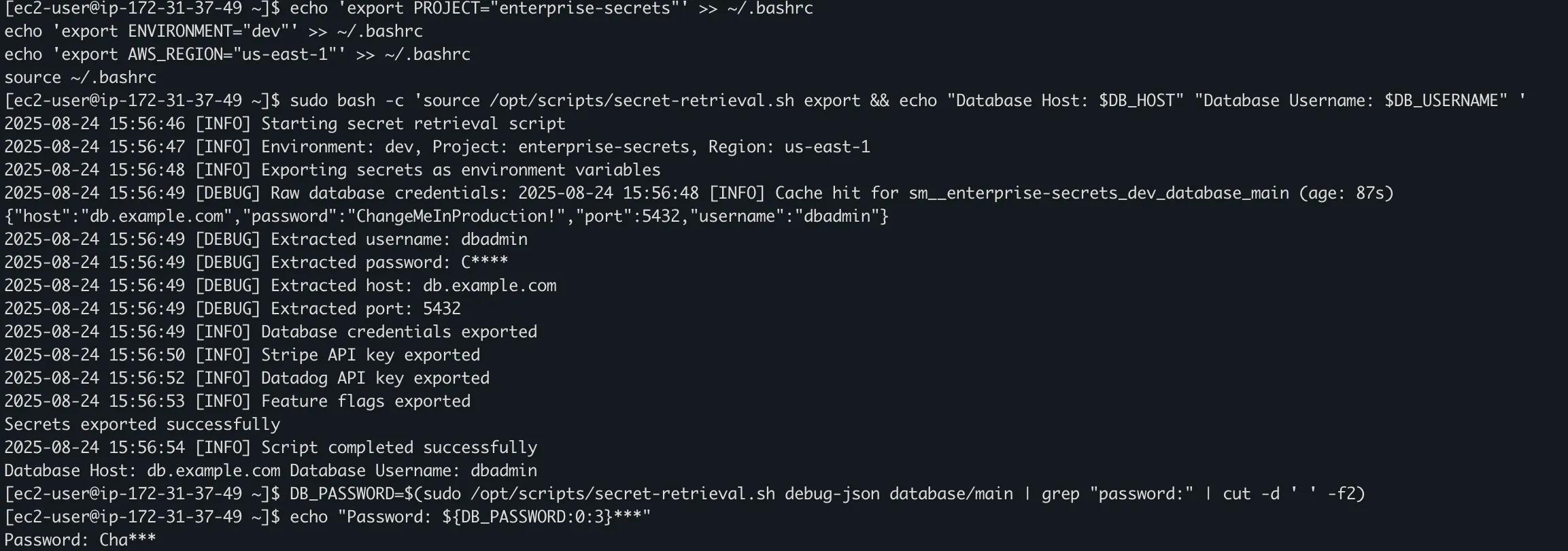
Performance Testing
# Test caching efficiency
echo "Testing cache performance..."
time /opt/scripts/secret-retrieval.sh get-secret database/main
time /opt/scripts/secret-retrieval.sh get-secret database/main # Should be faster
# Test error handling
/opt/scripts/secret-retrieval.sh get-secret nonexistent/secret
# View logs
tail -f /var/log/secret-retrieval.log

Phase 4: Monitoring
CloudWatch Dashboard Setup
Access your created monitoring dashboard:
# Get dashboard URL from Terraform output
terraform output dashboard_urlThe dashboard provides visibility into:
- Secret Access: Request volume and timing
- Cache Performance: Hit ratios and metrics
- Rotation Status: Success/failure of automatic rotations
Custom Metrics Implementation
The Lambda function automatically sends detailed metrics to CloudWatch:
# Example metrics sent by the Lambda function
send_metric('SecretRetrievalSuccess', 1) # Successful retrievals
send_metric('SecretCacheHit', 1) # Cache performance tracking
send_metric('LambdaInvocation', 1) # Usage patterns
send_metric('SecretRetrievalFailure', 1) # Error tracking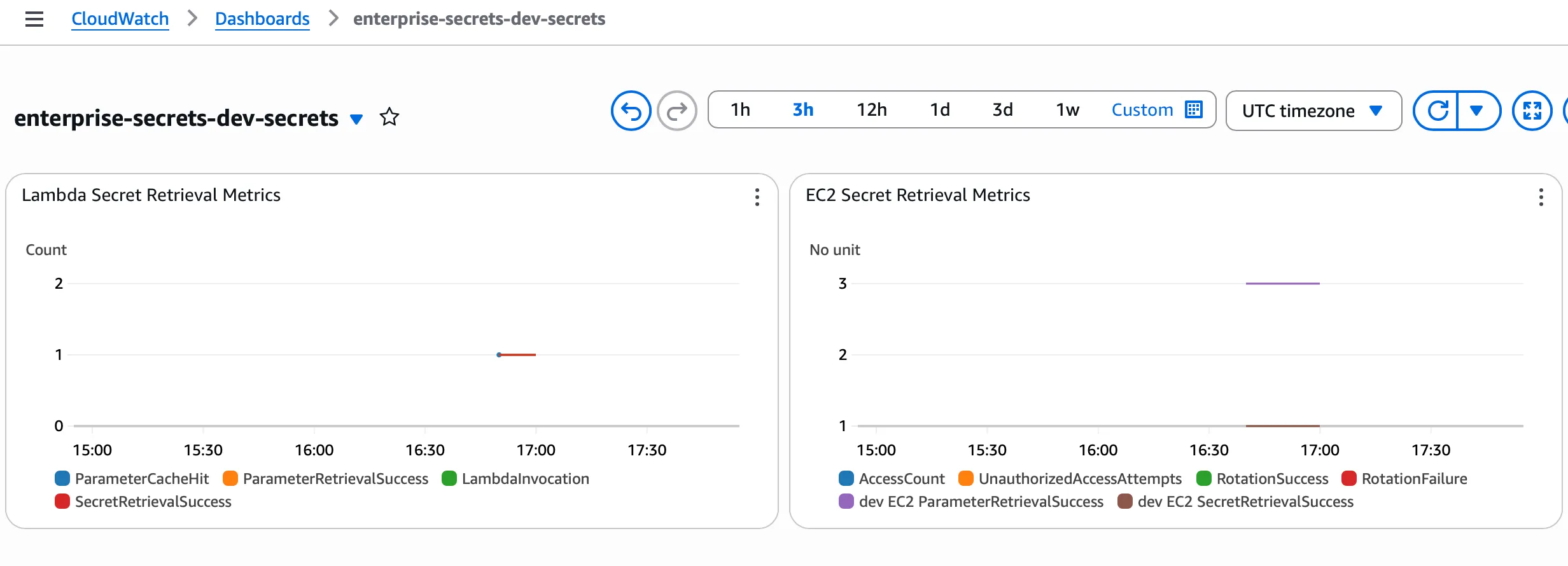
One of the email notifications related to SecretRotationFailure metrics
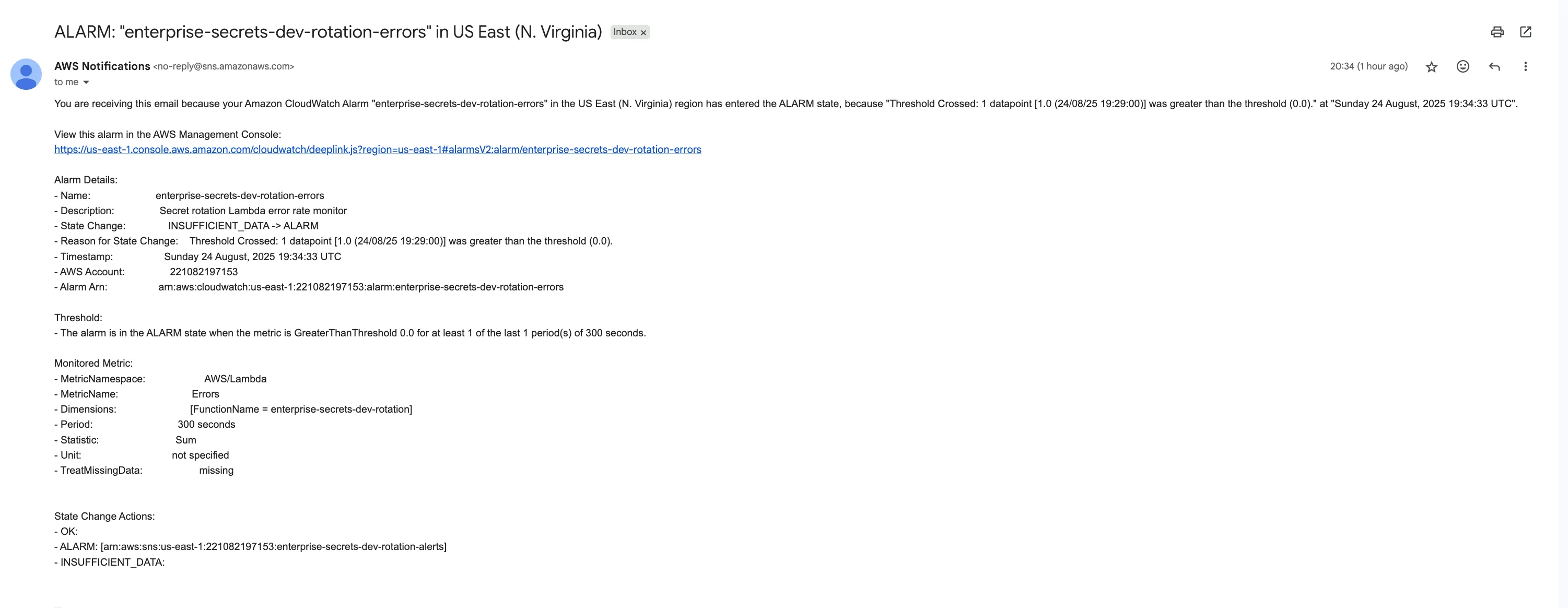
Query metrics using AWS CLI:
# View secret retrieval success metrics
aws cloudwatch get-metric-statistics --namespace "CustomMetrics/Secrets" --metric-name SecretRetrievalSuccess --start-time "$(date -u -v-24H +%Y-%m-%dT%H:%M:%SZ)" --end-time "$(date -u +%Y-%m-%dT%H:%M:%SZ)" --period 3600 --statistics Sum --dimensions Name=Environment,Value=dev Name=Function,Value=SecretRetrieval --region us-east-1

EventBridge Rules for Security Events
The infrastructure automatically configures EventBridge rules to detect:
- Monitor secret access events:
{
"detail": {
"eventName": ["GetSecretValue", "GetParameter", "GetParameters", "GetParametersByPath"]
},
"detail-type": ["AWS API Call via CloudTrail"],
"source": ["aws.secretsmanager", "aws.ssm"]
}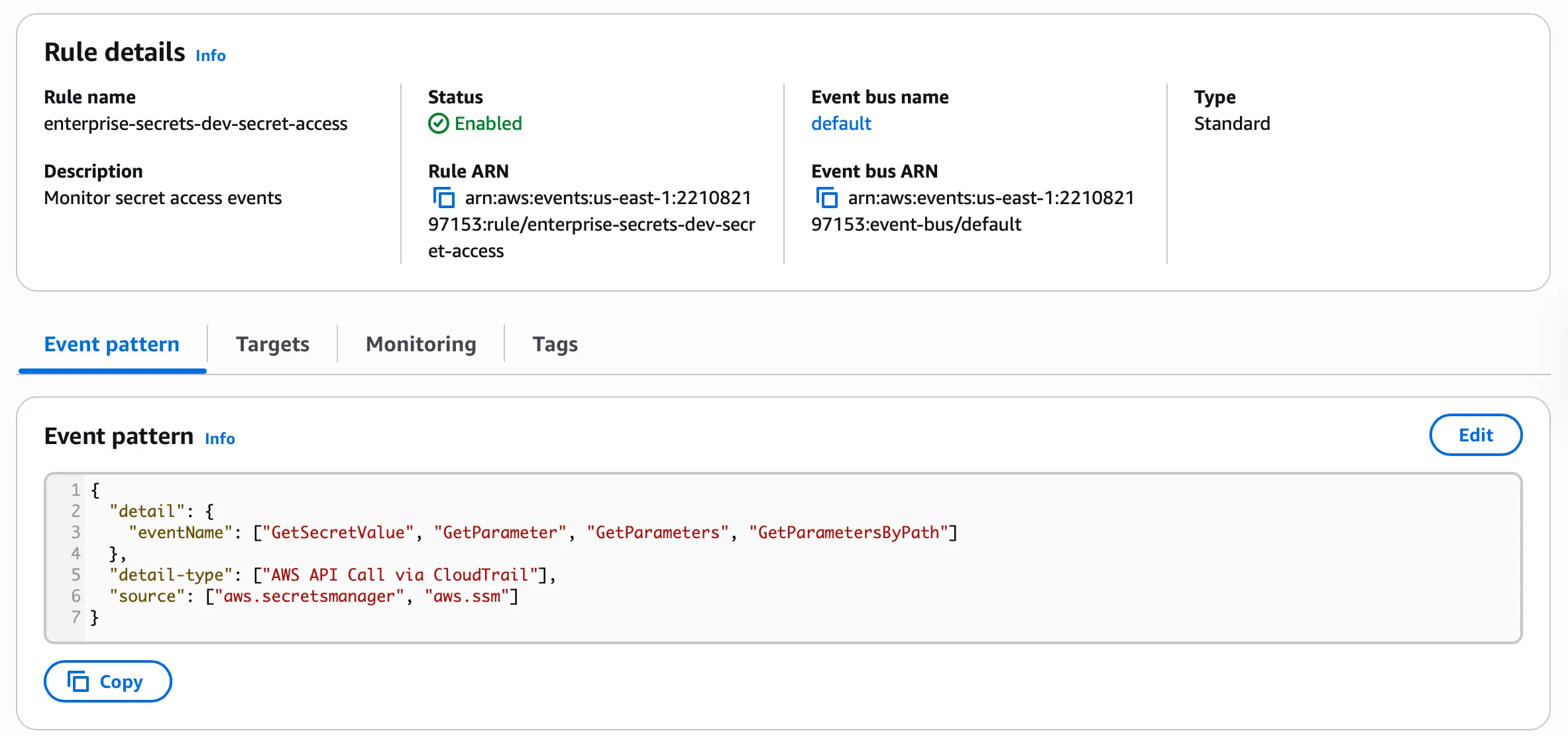
- Unauthorized Access Attempts:
{
"detail": {
"errorCode": ["AccessDenied", "UnauthorizedAccess", "TokenRefreshRequired"],
"eventName": ["GetSecretValue", "GetParameter"]
},
"detail-type": ["AWS API Call via CloudTrail"],
"source": ["aws.secretsmanager", "aws.ssm"]
}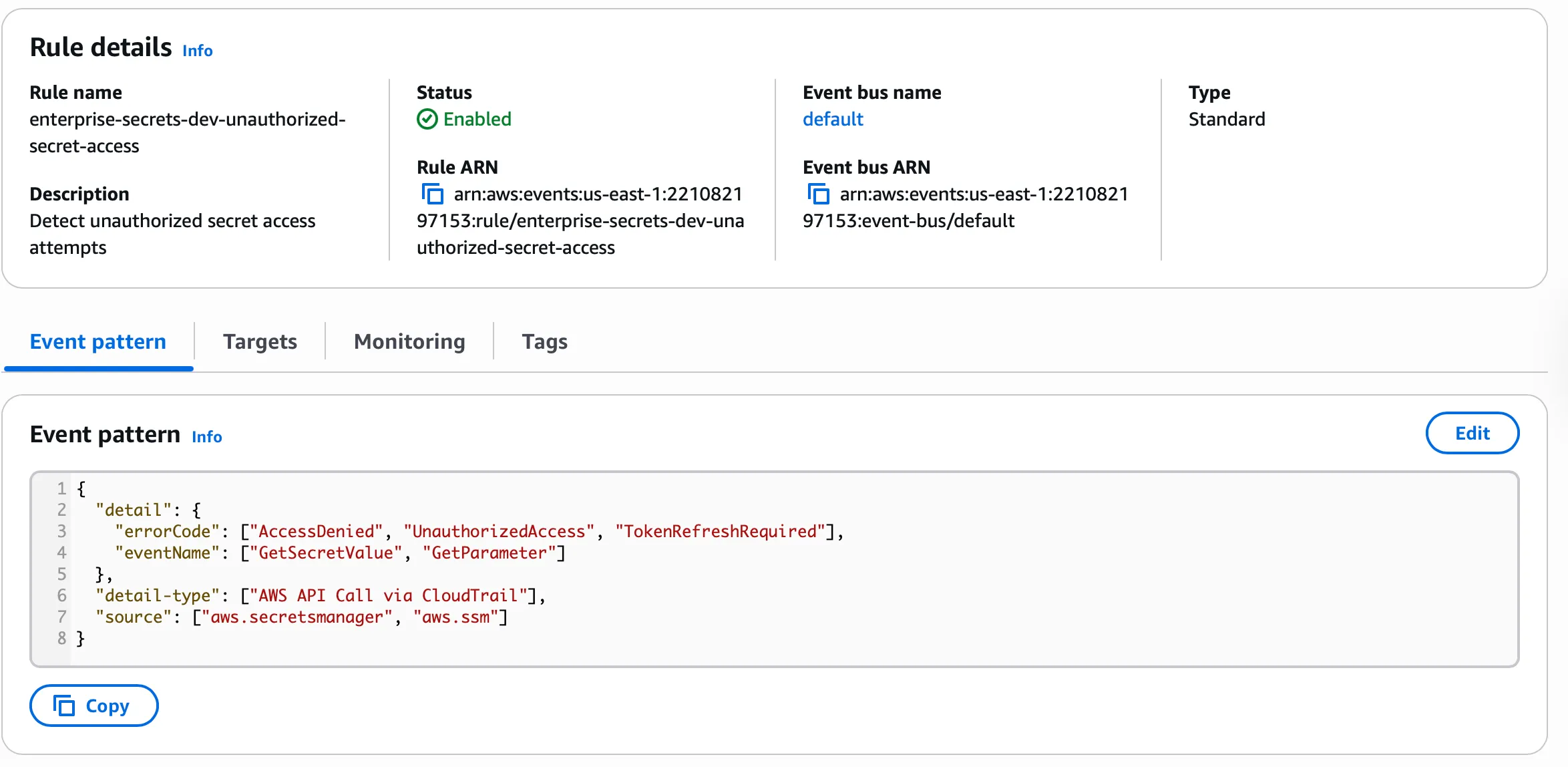
Phase 5: Secret Rotation Implementation
Automatic Database Rotation
Our solution includes a database rotation Lambda that handles:
- PostgreSQL and MySQL databases
Package and deploy the rotation function:
cd applications/rotation
# Install dependencies (if needed for packaging)
pip install psycopg2-binary pymysql -t .
# Create deployment package
# For development/testing environments (recommended):
zip -r rotation-function.zip mock_rotation.py
# For production environments (uncomment below):
# zip -r rotation-function.zip database_rotation.py
# Deploy rotation Lambda
#Note this is already setup
aws lambda create-function \
--function-name enterprise-secrets-dev-rotation \
--runtime python3.11 \
--role $(cd ../../terraform/environments/dev && terraform output -raw rotation_lambda_role_arn) \
--handler mock_rotation.lambda_handler \
--zip-file fileb://rotation-function.zip \
--timeout 30 \
--memory-size 128 \
--environment Variables='{
"ENVIRONMENT":"dev",
"PROJECT":"enterprise-secrets"
}' \
--region us-east-1Rotation Lambda Permissions
# Verify the resource policy
aws lambda get-policy \
--function-name enterprise-secrets-dev-rotation \
--region us-east-1Configure Secrets Manager Rotation
Enable rotation for your database secrets:
# Get the rotation Lambda ARN
ROTATION_LAMBDA_ARN=$(aws lambda get-function \
--function-name enterprise-secrets-dev-rotation \
--query 'Configuration.FunctionArn' \
--output text \
--region us-east-1)
# Or "cd ../../terraform/environments/dev && terraform output -raw rotation_lambda_role_arn" to get the value
aws secretsmanager rotate-secret \
--secret-id /enterprise-secrets/dev/database/main \
--rotation-lambda-arn $ROTATION_LAMBDA_ARN \
--rotation-rules '{"AutomaticallyAfterDays": 30}' \
--region us-east-1
# Configure rotation for analytics database (different schedule)
aws secretsmanager rotate-secret \
--secret-id /enterprise-secrets/dev/database/analytics \
--rotation-lambda-arn $ROTATION_LAMBDA_ARN \
--rotation-rules '{"AutomaticallyAfterDays": 60}' \
--region us-east-1Manual Rotation Testing
# Check rotation configuration
aws secretsmanager describe-secret \
--secret-id /enterprise-secrets/dev/database/main
# Trigger rotation
aws secretsmanager rotate-secret \
--secret-id /enterprise-secrets/dev/database/main \
--region us-east-1
# Check rotation result
aws secretsmanager list-secret-version-ids \
--secret-id /enterprise-secrets/dev/database/main \
--region us-east-1
Rotation Monitoring and Logs
Monitor the rotation process through CloudWatch logs:
# View rotation Lambda logs
aws logs filter-log-events \
--log-group-name /aws/lambda/enterprise-secrets-dev-rotation \
--start-time $(date -d '10 minutes ago' +%s)000 \
--filter-pattern "ERROR" \
--region us-east-1
# Check for successful rotation events
aws logs filter-log-events \
--log-group-name /aws/lambda/enterprise-secrets-dev-rotation \
--start-time $(date -d '10 minutes ago' +%s)000 \
--filter-pattern "Successfully completed step" \
--region us-east-1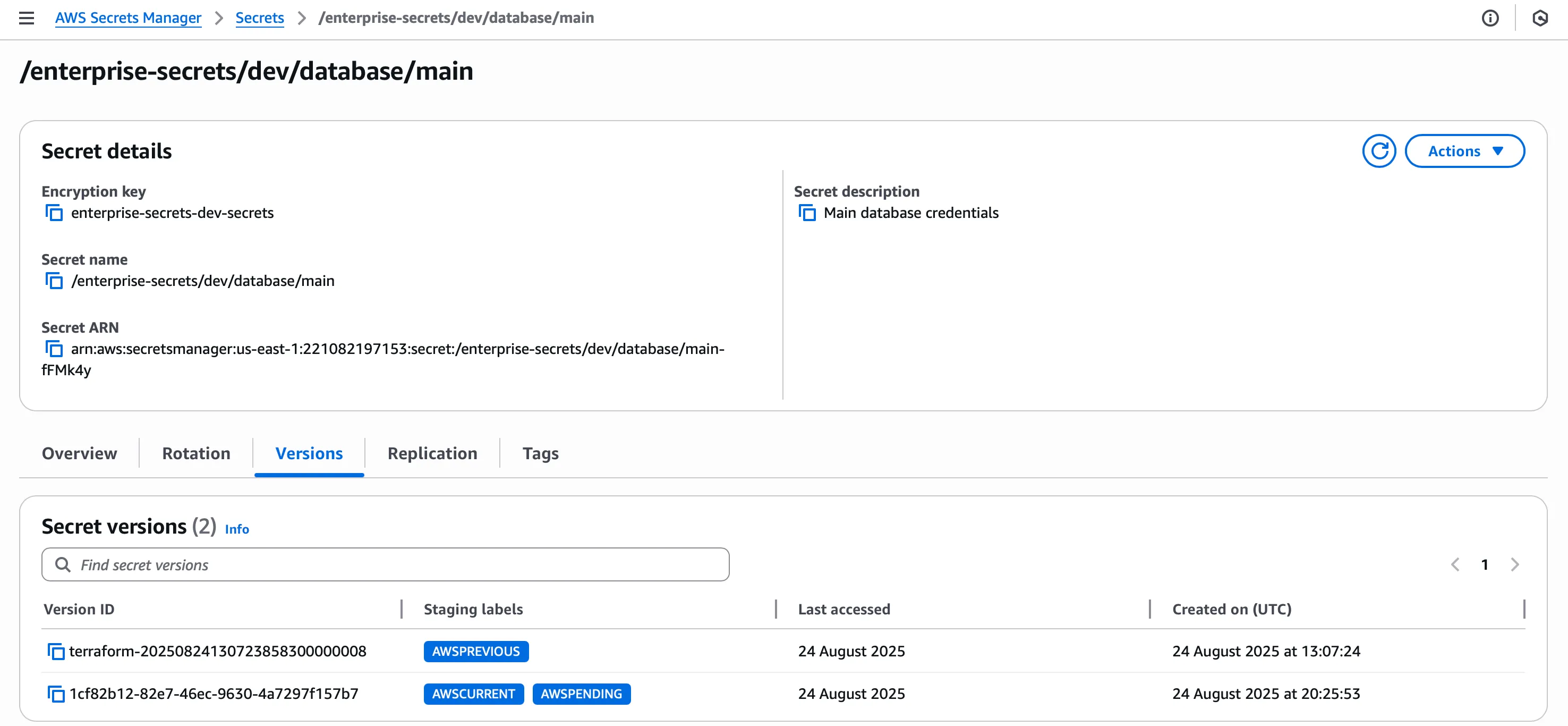

Opportunities to further improve on - next steps
Cross-Region Disaster Recovery
# Enable cross-region replication for critical secrets
aws secretsmanager replicate-secret-to-regions \
--secret-id /enterprise-secrets/prod/database/main \
--add-replica-regions Region=us-west-2,kmsKeyId=enterprise-secrets-dev-secrets/enterprise-secrets-prod-west \
--region us-east-1
# Verify replication status
aws secretsmanager describe-secret \
--secret-id /enterprise-secrets/prod/database/main \
--region us-east-1 \
--query 'ReplicationStatus'module "secrets_replication" {
source = "./modules/replication"
primary_region = "us-east-1"
replica_region = "us-west-2"
secrets_to_replicate = [
"/enterprise-secrets/prod/database/main",
"/enterprise-secrets/prod/api/payment_processor"
]
}Kubernetes Integration
# External Secrets Operator configuration
apiVersion: external-secrets.io/v1beta1
kind: SecretStore
metadata:
name: aws-secrets-manager
spec:
provider:
aws:
service: SecretsManager
region: us-east-1
auth:
jwt:
serviceAccountRef:
name: external-secrets-saSecret Scanning Pipeline
# GitHub Actions workflow for secret scanning
name: Secret Scanning
on: [push, pull_request]
jobs:
scan:
runs-on: ubuntu-latest
steps:
- uses: actions/checkout@v2
- name: Run Secret Scan
uses: trufflesecurity/trufflehog@main
with:
path: ./
base: main
head: HEADEffective secrets management is a much needed requirement of modern application security. This implementation demonstrates that you don’t need to choose between security and cost-effectiveness. By combining AWS native services with architecture decisions, you can build solutions that scale with your organization’s needs.
Remember: Security is not a destination but a journey. Regularly review your implementation, stay updated with AWS security best practices, and continuously improve your secret management practices.